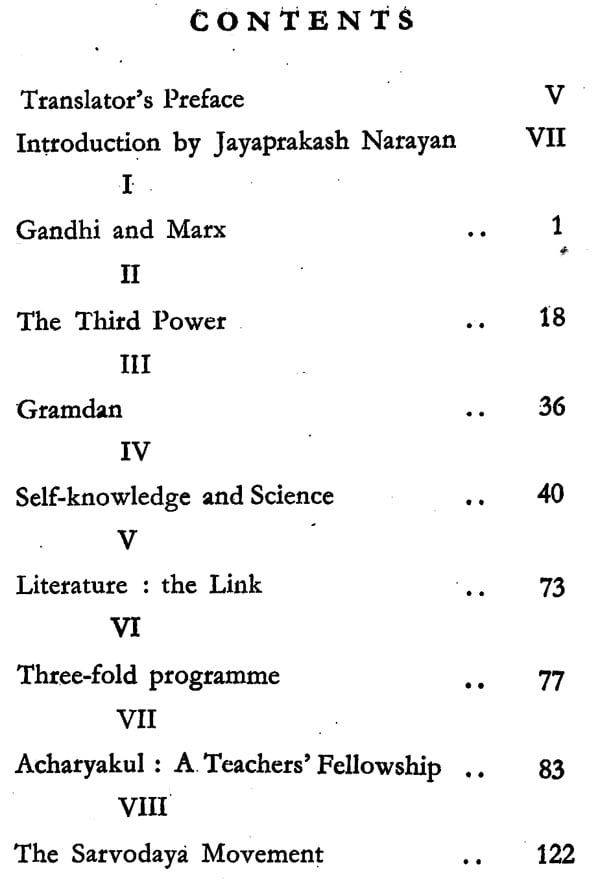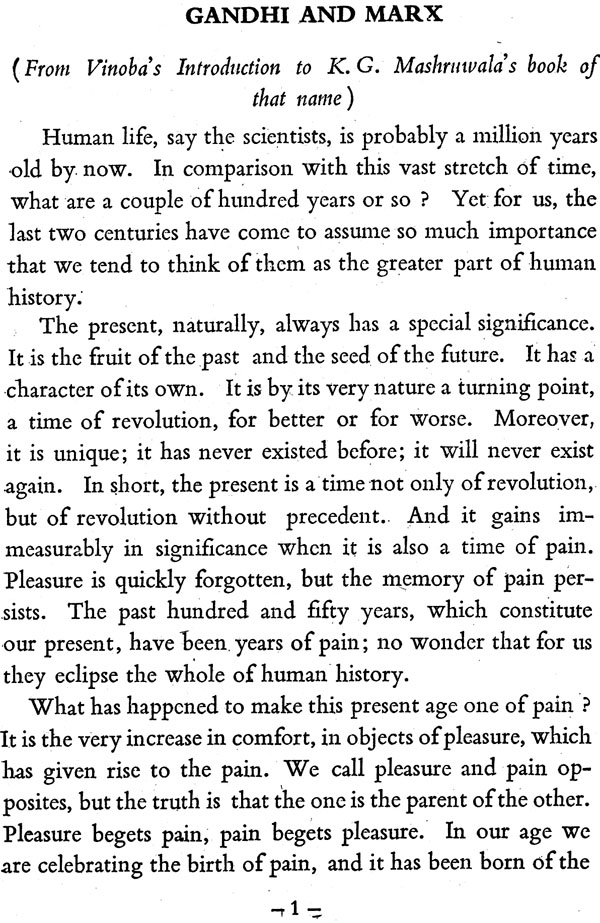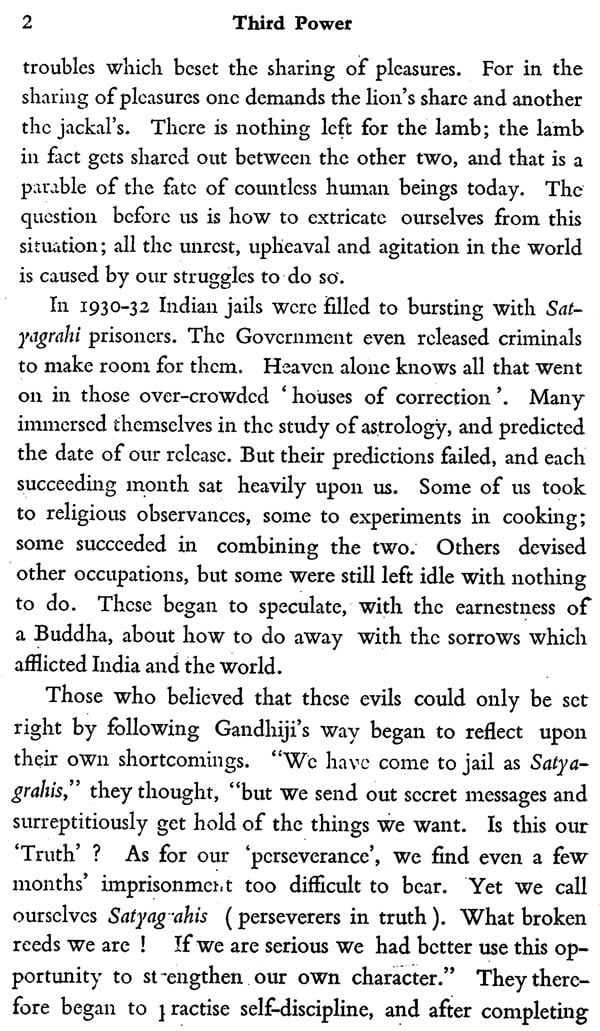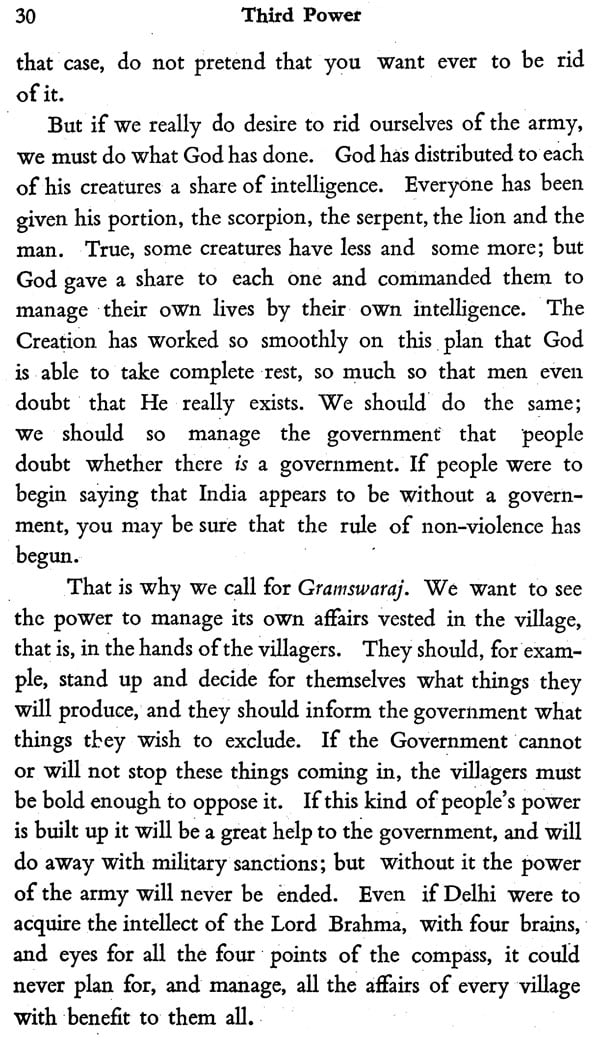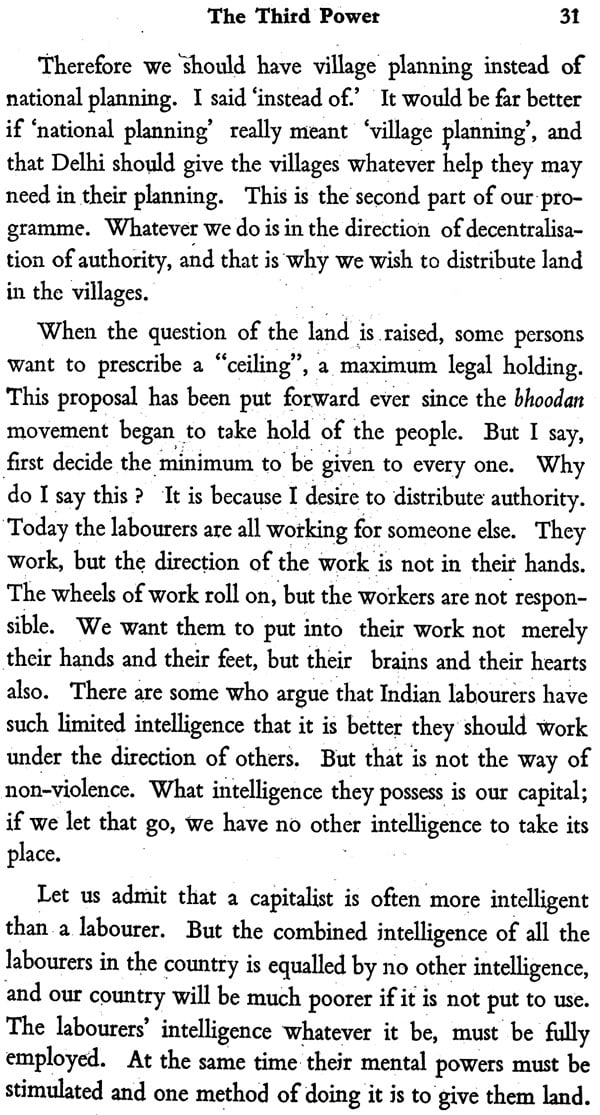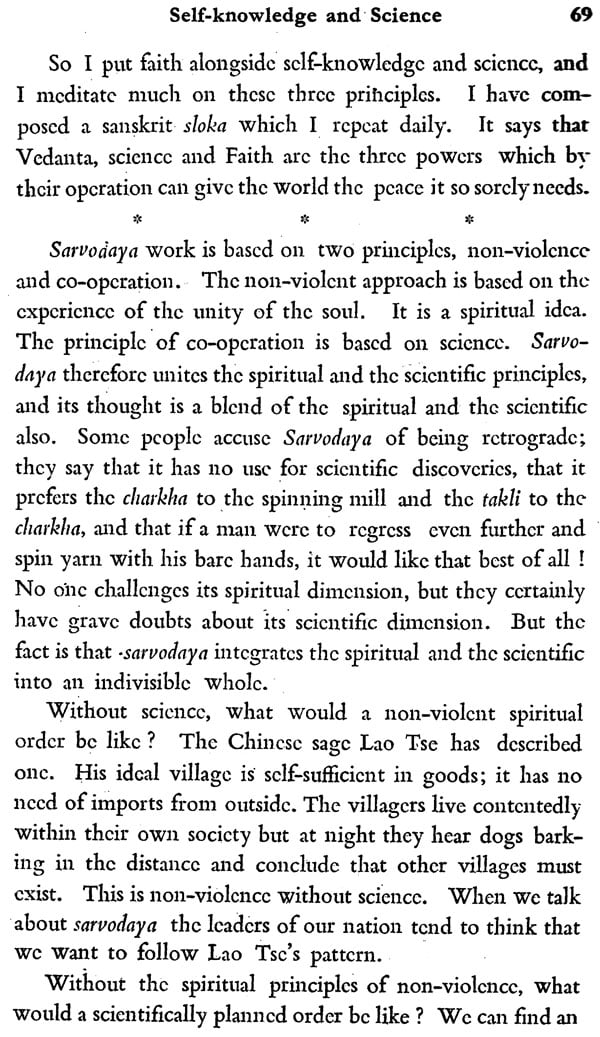
Third Power (A New Dimension)
Book Specification
| Item Code: | NAV464 |
| Author: | Vinoba Bhave |
| Publisher: | Sarva Seva Sangh Prakashan, Varanasi |
| Language: | English |
| Edition: | 2010 |
| Pages: | 143 |
| Cover: | PAPERBACK |
| Other Details | 8.50 X 5.50 inch |
| Weight | 160 gm |
Book Description
"Third Power" is an authentic selection from the speeches and writings of Achwya Vinoba Bhave, made by the author himself during his all-India Bhoodan journey on foot. Naturally, this book explains the various aspects of Sarvodaya ideology and Sarvodaya movement. Vinoba insists on the "Third Power" in this book Addressing Sarvodaya workers he says. "In the vocabulary of world politics the "third power" consists of those who are not attached to the American or to the Russian Block But in my vocabulary, the "third power" is that power which is opposed to the power of violence, and distinct from the power of the State". "This 'third power' is inherent in man as man and we seek to realise it on the widest scale.
The concept of three "qualities" (gunas), three "disorders" 4gins' h), three aspects of divinity, three worlds, has come to us from ancient Indian tradition. In modern politics we speak of &Le "three worlds". That part of the world which lies beyond respective spheres of influence of America and Russia is called the "third world". Likewise, we have the concept of a "third ice", as a power for the promotion of world peace. But we lyre no clear mental picture of this force.
Vinobaji has provided us with a philosophical justification aid a practical application of this new concept in the various Addresses which have been brought together in this publication. A careful study of this book is necessary for a proper understand-of Sarvodaya ideas and of the movement. Though The Third Power is the title of only one of the sections in this volume, ye find that in almost every other chapter some aspect or ether of this all-pervasive power is referred to, and the methods oi promoting it described.
What, we may ask, is this sarvodaya, or this "third power" conceived by Gandhi and Vinoba ? There are only two powers known to history for the transformation of human society, for reconstruction and preservation—the power of violence (himsa-shakti) and the power of law (danda-shakti). The power of love is mentioned, of course, but is almost always limited to the family-circle. Jesus preached love without limit, it is true : he aught his fellow-Jews that the "neighbours" whom it was their duty to love included not only their own countrymen but all smanity, even their enemies. But there is nothing to show vlat the disciples of Jesus tried to get the whole life of society vermeated by the principles of love. This much, however, is certain : during the early days of Christianity the followers of the religion did found a few communities based on love, and these communities were to a large extent successful in moulding their Lames on Christian ideals. Later, with the spread of Christianity and its acceptance as the State religion of the Roman Empire, the influence of the principle of love on society became weakened. Nobody can say that today's "Christian" societies are governed in any measure by the principles of love and non-violence pro-pounded by Jesus.
So long as Christianity was not a State religion, Christians withstood the corrupt practices of the Roman Empire with great courage and heroism and in a completely non-violent way in accor-dance with the teaching of Jesus. But after it became a State religion, practically all efforts to give a non-violent shape to the political, economic and other aspects of the life of society came to an end. The older tradition lingered, and emerged from time to time, in small communities such as (later) the Society of Friends (Quakers). A few idealists in Western countries, inspired by their dreams of a better world, have tried from time to time to estab-lish model communities, but these have not had a long lease of life, nor have they had much influence on ordinary society. In India Mahaveera and Buddha made compassion (karuna) the foundation of their dharma. But this compassion was limited to individual practice, or at best applied to the inner life of the bhikshu sanghas. The Emperor Ashoka is the only example in his-tory of a ruler who accepted the Buddhhist dharma, and after the blood-bath of his victory in Kalinga vowed that he would not make war again. It does not seem, however, that Indian society in Ashoka's time was permeated by non-violence or com-passion. It would, in fact, be a mistake to imagine that non-vio-lence means merely the absence of outward violence. The ex-ploitation, oppression, gross inequality and other social evils which 'exist within the legal framework of the State are all aspects of violence even though there may be no open violence.
These three religions ( Christianity, Jainism, Buddhism ) are founded on the bedrock of love, non-violence and compassion, yet their adherents have not been able to build their own societies on this foundation. That they have failed is obvious : to under-stand why they failed calls for some reflection. It cannot be said that Mahaveera, Buddha and Jesus failed to recognise the violence, latent but all-pervasive, in the societies in which they lived. On the contrary, it is clear from their profound teachings on the relationship between the rich and the poor, on acquisitive-ness, attachment etc., that they were fully alive to the hidden violence in the society of their times.
There appear to be two reasons why these religions failed to cast out violence from the heart of society. First, the moral values of self-discipline, non-acquisitiveness, renunciation, con-quest of lust, compassion etc. were regarded only as means to the spiritual uplift or salvation of the individual. The first great Founders had envisaged a world transformed and reformed by these values, but the religious institutions which were established in their names did not accept this social purpose. If they had done so, they would have had to face the displeasure and opposition of the authorities and of the exploiting classes, so that the expansion of their sect would have been hindered. The second reason for their failure was that all three movements became official State religions and so lent their support to the State's organised military and legal power. It was, therefore, not possible for them to create a society based on non-violence.
**Contents and Sample Pages**
